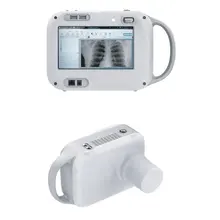Exploring the Versatility of Hydraulic Operating Tables
The hydraulic operating table stands as a cornerstone in modern medical facilities, offering unparalleled versatility and support in various surgical environments. These tables are engineered to provide precise positioning and stability, which are critical during intricate procedures. The adaptability of ot table hydraulic systems allows for smooth adjustments and enhances the efficiency of surgical teams.
Types and Applications of Hydraulic Operating Tables
Hydraulic operating tables come in several types, including electro hydraulic operating tables and models designed specifically for veterinary use, such as the veterinary hydraulic surgery table. These tables serve a broad spectrum of medical fields, from general surgery to specialized practices. The ot table electro hydraulic with attachments offers additional functionality, accommodating various surgical disciplines and patient positioning requirements.
Features and Materials
Constructed from durable materials like steel, metal, and high-grade plastics, hydraulic operating tables ensure longevity and easy maintenance. The hydraulic ot table specification often includes features such as radiolucent tops for imaging purposes and modular designs for enhanced ergonomics. The integration of hydraulics provides smooth and quiet operation, which is essential in maintaining a sterile and focused surgical environment.
Advantages of Hydraulic Operating Tables
The primary advantage of a hydraulic surgery table lies in its ability to facilitate patient positioning with precision. This is crucial in minimizing the risk of pressure sores and improving surgical access. The reliability of hydraulic mechanisms ensures consistent performance, which is vital during lengthy and complex surgeries.
Considerations for Selection
When selecting a hydraulic operating table, considerations such as the weight capacity, range of motion, and compatibility with surgical procedures are paramount. Facilities must evaluate the table's specifications to ensure it meets the demands of their surgical caseload. While the hydraulic operation table price is a factor, the focus should remain on the table's features and how they align with the facility's needs.
Conclusion
In conclusion, the hydraulic operating table is an essential asset to any medical facility, providing the foundation for successful surgical outcomes. Its robust construction, coupled with advanced hydraulic technology, offers a reliable and efficient solution for patient positioning and surgical precision. As the medical industry continues to evolve, these tables will remain integral in supporting the ever-growing demands of surgical care.






























 浙公网安备 33010002000092号
浙公网安备 33010002000092号 浙B2-20120091-4
浙B2-20120091-4